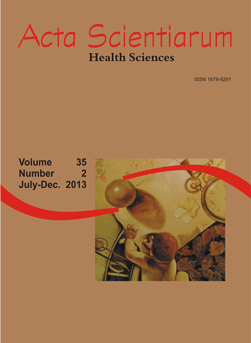<b>Food behaviors and youth obesity in Pakistan</b> - doi: 10.4025/actascihealthsci.v35i2.11885
Resumo
The epidemic of obesity took off from about 1980 and in almost all countries has been rising inexorably ever since. Only in 1997 did world health organization accept that this was a major public health problem. It is also becoming an important public health problem among Pakistani children due to changes in life style and other factors. The increasing prevalence of childhood obesity and its concomitant health risks justify widespread efforts toward prevention. A Cross-sectional study was conducted to elaborate the various types of foods and change in eating behavior leading to abnormal weight gain among the youth. A total of 504 male and female students of class six to ten were selected through simple random sampling. Anthropometric measurements were done with calibrated instruments using the age and sex specific BMI cut off points according to World Health Organization growth reference. Results showed significant proportion of girls (86%) and boys (85%) had abnormal waist to hip ratio. The determinants of the obesity lie within the rapid changes in food intake behavior and lifestyle patterns which had a clear and significant impact on the prevalence of obesity in youth of Pakistan.
Downloads
DECLARAÇÃO DE ORIGINALIDADE E DIREITOS AUTORAIS
Declaro que o presente artigo é original, não tendo sido submetido à publicação em qualquer outro periódico nacional ou internacional, quer seja em parte ou em sua totalidade.
Os direitos autorais pertencem exclusivamente aos autores. Os direitos de licenciamento utilizados pelo periódico é a licença Creative Commons Attribution 4.0 (CC BY 4.0): são permitidos o acompartilhamento (cópia e distribuição do material em qualqer meio ou formato) e adaptação (remix, transformação e criação de material a partir do conteúdo assim licenciado para quaisquer fins, inclusive comerciais.
Recomenda-se a leitura desse link para maiores informações sobre o tema: fornecimento de créditos e referências de forma correta, entre outros detalhes cruciais para uso adequado do material licenciado.























5.png)







